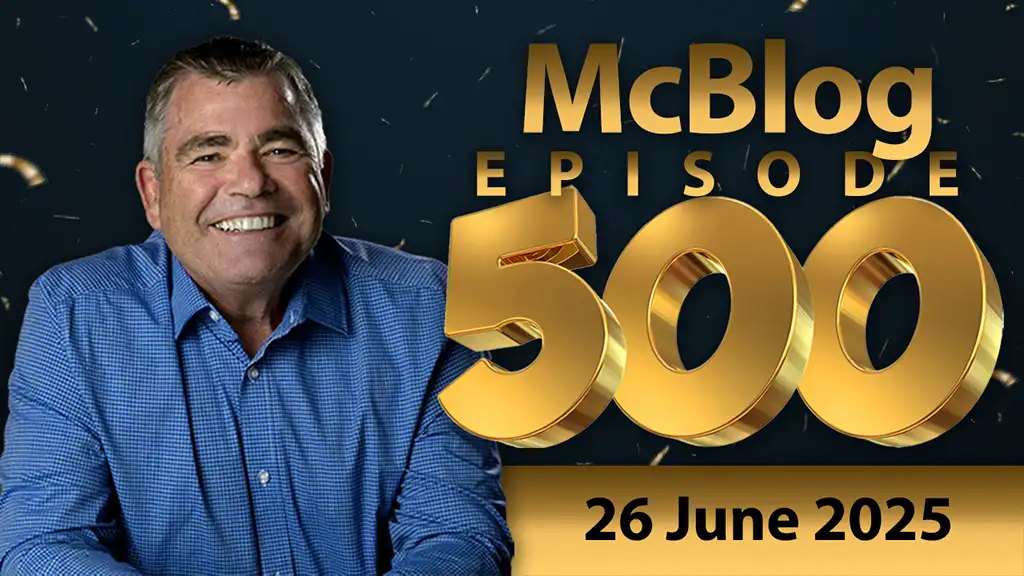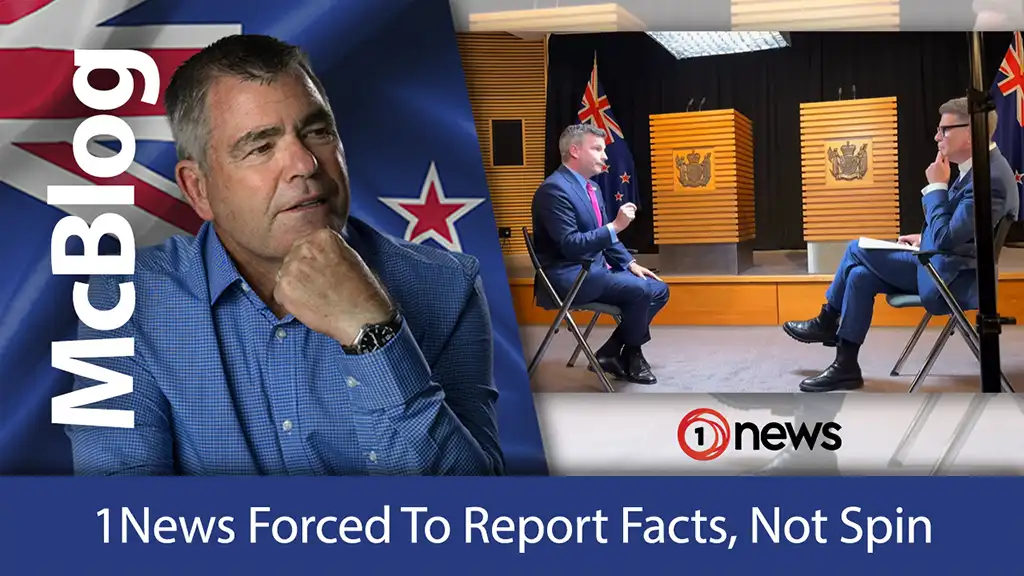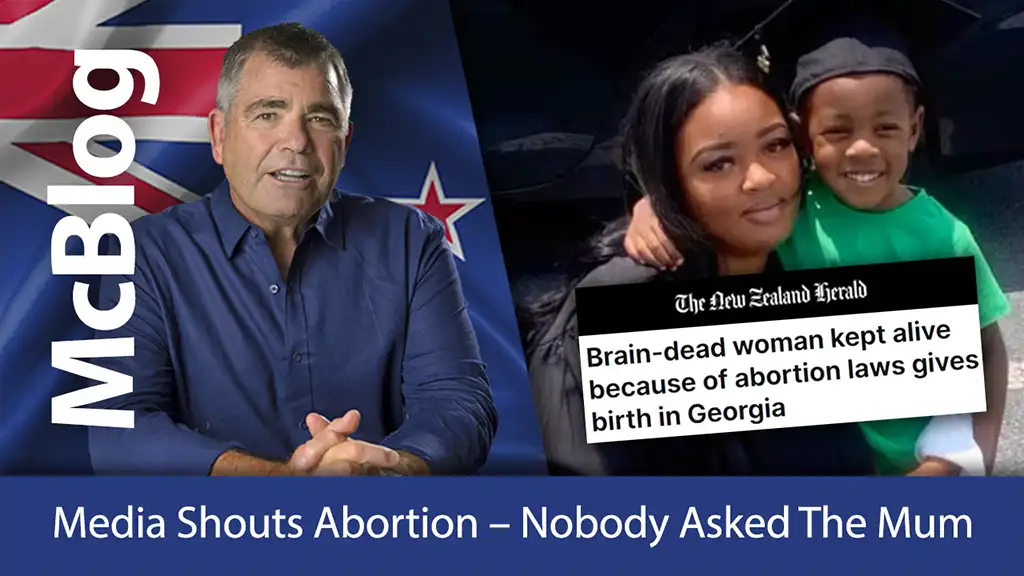The push is on to expand the euthanasia law. We knew it was coming. We knew it was coming when the law was first passed. The slippery slope. But we were told by politicians, the media and the supporters of euthanasia “oh don’t be silly, there’s no slippery slope.” It’s taken them less than three years to prove us right.
The push is on to expand the euthanasia law. We knew it was coming. We knew it was coming when the law was first passed. The slippery slope. But we were told by politicians and the media and the supporters of euthanasia – oh don’t be silly. There’s no slippery slope.
It’s only taken them less than three years to prove us right
There is concrete evidence from the countries which have introduced euthanasia that the availability and application of euthanasia expands to situations not initially envisaged. When a newly-permitted activity is characterised as a ‘human right’, the overseas experience is that there is an inevitable push to extend such a ‘right’ to a greater number of people, such as those with chronic conditions, disabilities, mental illness, those simply ‘tired of life’, or even children.
There’s also the elephant in the room. The End of Life Choice Act only provides a ‘right’ to one choice – premature death. There is no corresponding right to palliative care. Good palliative care and hospice services are resource intensive; euthanasia would be cheaper. There is a new element of ‘financial calculation’ into decisions about end-of-life care. This is harsh reality. At an individual level, the economically disadvantaged who don’t have access to better healthcare could feel pressured to end their lives because of the cost factor or because other better choices are not available to them.
Let’s check out a few recent cases – first overseas and then local
A judge issued a ruling [in March] that clears the way for a 27-year-old woman to be accepted into Canada’s medical assistance in dying (MAID) programme. Despite the attempts by her father to prevent this. To be eligible for MAID, a patient needs to have a ‘grievous and irredeemable’ medical condition. In court, the woman did not need to identify which medical condition she is supposed to be suffering from. She was not required to provide information about her symptoms or explain how they cause her to suffer. All her parents have seen is the evidence that she followed the correct procedures to access MAID, and that her eligibility was approved by two doctors. The father argues that the doctors were wrong to conclude that his daughter met the MAID criteria. He told the courts that she was diagnosed in 2016 with autism-spectrum disorder. She also has a long history of seeking medical diagnoses for physical ailments. But, to her father’s knowledge, no diagnosis was ever made. He said it is unclear to him whether she suffers from any physical condition at all. He speculated that she may suffer from psychological conditions that ‘caus[e] her to believe that she suffers from physiological symptoms’.
https://www.spiked-online.com/2024/03/28/now-canada-is-euthanising-autistic-people/
The Canadian Broadcasting Corporation also reported
Currently, two doctors or nurse practitioners have to approve a patient for MAID. One agreed to sign off on approving her for MAID, the other denied the application. A third “tie-breaker” doctor, as described by lawyers for Alberta Health Services, was then offered to the woman.
So when you remove the terminal aspect – going to die in 6 months as our law currently says – you could end up with this situation. Euthanasia for autism.
The judge said ‘Dignity and right to self-determination’ outweigh parent’s concerns. Right to self determination – even if it’s wrong.
Then the Netherlands
Ter Beek once had ambitions to become a psychiatrist, but she was never able to muster the will to finish school or start a career. She said she was hobbled by her depression and autism and borderline personality disorder. Now she was tired of living—despite, she said, being in love with her boyfriend, a 40-year-old IT programmer. She recalled her psychiatrist telling her that they had tried everything, that “there’s nothing more we can do for you. It’s never gonna get any better.” At that point, she said, she decided to die. “I was always very clear that if it doesn’t get better, I can’t do this anymore.”
Typically, when we think of people who are considering assisted suicide, we think of people facing terminal illness. But this new group is suffering from other syndromes—depression or anxiety exacerbated, they say, by economic uncertainty, the climate, social media, and a seemingly limitless array of fears and disappointments.
Some ethicists say that euthanasia is not a last resort – it’s now a default option
You’re saying – that’s overseas
A Napier couple whose profoundly intellectually disabled son died last year want a change to the assisted dying legislation so it would allow legal guardians to protect their children from an undignified death. Their son died in January last year at the age of 20. He had profound intellectual disability, cerebral palsy and epilepsy
He was plagued by frequent chest infections and after two weeks hospitalisation for an infection in mid-2022 doctors told the parents they were nearing the end of what could be done for the infections… That meant his next serious chest infection would likely prove fatal.
In July 2022 the parents wrote to the Assisted Dying Service of Te Whatu Ora, seeking exemptions to two of the qualifying criteria: Mainly, they were seeking an exemption to the criteria stating that the person wishing to end their life must be competent to make an informed decision about assisted dying. But also they were looking for an exemption to the requirement that the person wishing to end their life must be suffering from a terminal illness that is likely to end their life within six months.
Well he actually qualifies under the terminal requirement – likely to die in next 6 months. But they want to have euthanasia – even for people who don’t give their consent!
They warned that if their request was declined they may challenge the decision to the Human Rights Review Tribunal “on behalf of … the wider intellectually disabled community members that lack that capacity”.
Right – they sound like activists. You read on a little – and guess who the father is the uncle of? Lecretia Seales – the campaigner for our current euthanasia law.
I found something interesting that I never knew when this debate first started. Many people don’t know that Lecretia Seales cancer was diagnosed in 2011. She was given just weeks to live. But she had treatment including surgery. It was successful. She did sadly die – on 5 June 2015 – yes, that’s 4 years on from the “weeks to live”. The prognosis was wrong. She campaigned for four years for the right to euthanasia – which if it was already legal as it is now, she would have missed those 4 years. Lecretia died peacefully at home from her illness.
In the NZ Herald in March 2022 – remember that date
The family of a Wellington teenager diagnosed with a rare form of cancer says they will go “to the ends of the earth” to find a cure if that’s what it takes. Fifteen-year-old Otis Hill is a musician who dreams of being an audio-engineer. In February he was diagnosed with desmoplastic small round cell tumour (DSRCT). DSRCT is an incredibly rare, aggressive cancer. … The rare diagnosis came as a complete shock to the family, who had been told it was most likely to be lymphoma. Rasch-Hill says it floored them, and the defeatist attitude of the Christchurch specialist they had been sent to was shocking, too…. the doctor said there was basically no point in a second opinion, we can make him comfortable here in Christchurch and he can do some bungee jumps.” For Otis and his family, that was not an option.
Here’s the next Herald article – note the date – 10 February 2024.
A Wellington teenager who has lived with a rare and terminal cancer for more than two years says it’s his love of music which has kept him fighting. .. when the real diagnosis was revealed the family was told to go home and make him comfortable as he only had months to live. Two years on Hill has defied all odds and is still alive
Yes if he was 18 or older, he would have qualified for euthanasia – and he and his family would have missed him recording an album, and many other things.
Then this one 1 April this year – in the NZ herald
About Michele Leggott the prominent Auckland poet
“We’re looking at a PET scan you did yesterday, and there is no active lymphoma. You are in remission.” As Leggott burst into tears, a young research student in the room scrambled for the nearest box of tissues. It was a surreal moment: just like the day, not much more than a year before, she’d been given only a year to live.
CAR-T cell therapy, in which a patient’s immune cells are collected, genetically modified to recognise and kill their cancer, then given back to them as treatment.
For Leggott, the difference was life and death. “It’s quite simple: if I hadn’t been able to access CAR-T, I wouldn’t be here now.”
And if she’d been able to access euthanasia, which she qualified for a year ago, she wouldn’t now be enjoying remission.
Then this one from this February just gone
Janie Te Whata was told in January 2023 her teenage daughter had only nine months to live.
Note that this article is 13 months later
Malone’s tumour has shrunk after she tried a different treatment and she has outlived her given life expectancy. The tumour that was once the size of a golf ball was now half that size, added Te Whata. “We just want it to shrink away to nothing.” Malone will return to school this year for Year 13 after taking last year off.
Now you’ll notice that all these NZ stories are in the media – but none of them make the connection to euthanasia – or the problem with our law when the prognosis is wrong, or the palliative care is insufficient.
But the soft sells for expanding euthanasia are coming thick and fast.
The NZ Herald reports
A specialist paediatric palliative care (PPC) doctor says New Zealand is falling behind other nations in its care of terminally ill children and the Government must step up to help.
A Wellington charity founded to provide specialised PPC for tamariki (children) aged 24 weeks to 19 years needs more funding. An anonymous donor privately funds the charity but that funding will only last until April 2025. Dr Amanda Evans is one of only 2 paediatric palliative care specialists in NZ. “There’s absolutely no after-hours service funded in New Zealand for paediatric palliative care.”
Isn’t that shocking! But when will there be calls for euthanasia for children – as in Belgium.
Then I saw a further blog by Ian Powell who used to be the Executive Director of Salaried Medical Salaried Medical Specialists, the union representing senior doctors and dentists in New Zealand.
A study of paediatric palliative care in 2021 which placed New Zealand at what is labelled Level Four. This meant that the care was in line with other developed nations.
But, in 2023, it fell dramatically putting in on Level Two. In other words, on a par with developing nations like Ethiopia and Cameroon.
Three reasons are behind this dramatic decline:
- Worsening shortages with health professionals leaving the workforce.
- Increasing numbers of patients needing the service.
- Lack of funding (the only government funding is for Starship Hospital in Auckland).
So we fund euthanasia – but we don’t properly fund palliative care and hospices.
You can see where this is going
But in my view, the media are softly pushing for the expansion of the law as I’ve highlighted recently.
Starting in January with this one in the NZ herald
Ironically the article starts with WARNING: This story discusses suicide
A New Zealand woman with multiple degenerative illnesses is begging the Government to change the assisted dying rules so she can die with “dignity.” The End of Life Choice Act 2019 currently requires that a patient has a “terminal illness likely to end the person’s life within six months”. But New Zealanders with degenerative, not necessarily terminal, diseases say the restrictions of the law are leaving them in severe pain without an end in sight… Despite meeting four out of the five criteria for assisted dying at age 50, she is unable to prove a six-month life expectancy, leaving her feeling trapped. “I should have died 10 years ago.” Martin’s relentless decline in health started with severe daily joint dislocations and constant pain in her early 30s.
So 20 years. Now the story also quotes
Social Justice Aotearoa CEO Jackie Foster created a petition to change Section 5(c) of the End of Life Choice Act to enable people suffering from degenerative diseases to use the end-of-life legislation. “When the end-of-life referendum went to the vote, I voted no, but now having lost a family member to cancer and seeing Nicole’s journey on a personal level, I have thought about it and now support the legislation.”
The Herald then gave promotion to the petition and the link etc. I checked it. it closed a month ago and despite the promotion, it only had 3,300 signatures.
The 66% who voted yes in the 2020 referendum actually voted for a very conservative version of euthanasia. But unfortunately, for activists, it was a foot in the door which they want to open wide.
And the latest case or campaign by the media for euthanasia is this one – Tracey Hickman.
And please note – the issue isn’t about her personally – but she wanted to use her sad death to campaign on this issue.
It’s interesting to watch, isn’t it. It was the side effects of the treatment that she’d had enough of
She can’t do the things she wants to do
She’s not me anymore – so the people aren’t with the person they know and love.
I could get treatment and exist longer – but I can’t have the peddle to the floor any more. No purpose.
Really?
Is that the message for those whose lifestyle changes as they age – or suffer an injury – or become disabled in some way?
To me that sends a dangerous message about how we must control everything – and if we can’t…..
But this is part of the campaign including this podcast by broadcaster Dom Harvey
They also had an article about the day of her death and the advice she had written down for others.
As I read it, I thought – that’s the kind of advice anyone would give in their final days – without euthanasia.
What they want their friends to know. How they’d like to be treated, what they need.
But this is a special news item and feature – because it’s about assisted suicide – sorry, euthanasia – sorry – assisted death. It sounds much nicer doesn’t it.
You’ll note that you probably won’t get tributes printed in the NZ Herald when you or I die – but when the media are promoting euthanasia, then you do
A woman who decided to end her life by way of assisted dying on a New Zealand beach surrounded by her loved ones has been remembered as an “example and inspiration” for friends and colleagues. “In her words, it was to be a fast and gentle end to a life in which she’d always had her pedal to the floor,” her obituary read.
Interestingly it also said
Her obituary said “I’m not going to let living with cancer stop me running!”
The article also says that in April, she was told she had 2-3 months to live – but one month later….. she chose to die.
The article then continues with an explainer of the law – just in case you didn’t know about it.
Now nobody who died in a hospice with superb palliative care from doctors and nurses have had an article like this. Nobody who died in hospital or died at home surrounded by loved ones have had this marketing campaign.
Because we don’t really like talking about the process of death and those final days and how it ended.
Unless it’s euthanasia.
One of our concerns expressed during the recent euthanasia debate and referendum and now all this messaging in the media and the soft sell of expanding the law was the reality that terminally ill people are vulnerable to direct and indirect pressure from family, caregivers and medical professionals, as well as self-imposed pressure. They may come to feel euthanasia would be ‘the right thing to do’; they’ve ‘had a good innings’ and do not want to be a ‘burden’ to their nearest and dearest. It is virtually impossible to detect subtle emotional coercion, let alone overt coercion, at the best of times.
Because we’ve legalised it, we’ve normalised it. No longer is the option off the table. It’s clearly on the table now. Sadly, even my local hospice offers euthanasia.
But you probably won’t see the puff pieces about coercion. Or the cheapness of euthanasia vs palliative care. Or the impact of euthanasia on members of the family who disagree with their decision and want to care for them in that final season. You won’t hear those.
But assisting suicide is not the answer. We can die with dignity – without euthanasia.



